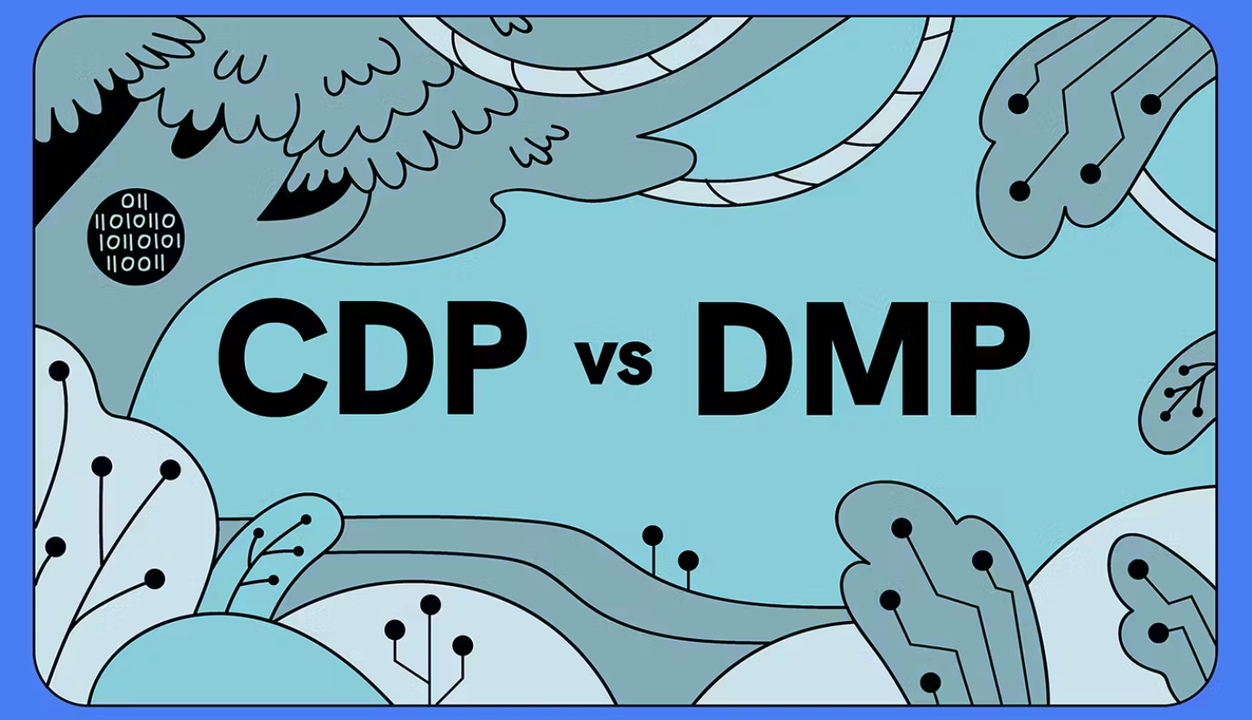In the ever-evolving landscape of data management, organizations constantly seek efficient solutions to harness, analyze, and leverage their data effectively. One such evolution has been the transition from Data Management Platforms (DMPs) to Customer Data Platforms (CDPs), reflecting a paradigm shift in how businesses understand and utilize data.
DMP: A Look Back
DMPs emerged as a way for organizations to leverage third-party data – anonymized customer information purchased from data brokers. This data included browsing behavior, demographics, and purchase history, allowing marketers to create targeted advertising segments.
The Rise of DMPs:
- Enhanced Targeting: DMPs offered a significant improvement over basic advertising by enabling more precise targeting based on inferred customer interests.
- Campaign Optimization: DMPs facilitated audience segmentation based on various factors, leading to more effective and efficient marketing campaigns.
Why Organizations Invested in DMPs
Organizations invested in DMPs primarily for three reasons:
- Audience Segmentation: DMPs enabled businesses to segment their audiences based on behavioral data, allowing for targeted advertising and improved campaign effectiveness.
- Cross-Channel Integration: DMPs facilitated the integration of data from various channels, providing a holistic view of customer interactions across different touchpoints.
- Data Monetization: DMPs allowed companies to monetize their data by selling anonymized audience segments to third-party advertisers, creating additional revenue streams.
The Fall of DMPs:
- Privacy Concerns: Growing awareness of data privacy and regulations like GDPR and CCPA restricted the collection and use of third-party data.
- Data Decay: Third-party data is often outdated and unreliable, leading to inaccurate audience targeting and wasted ad spend.
- Limited Customer Insights: DMPs primarily focus on advertising, offering limited capabilities for understanding the complete customer journey.
Enter the CDP: A Customer-Centric Approach
CDPs focus on unifying first-party data – information collected directly from your customers through website interactions, email signups, purchase history, and loyalty programs. This data paints a more holistic picture of your customer base.
Key Differences Between DMP and CDP:
- Data Source: DMPs leverage third-party data, while CDPs focus on first-party data.
- Customer Focus: DMPs create audience segments, while CDPs build unified customer profiles.
- Use Cases: DMPs primarily support advertising, while CDPs empower a wider range of marketing initiatives, including personalization, customer segmentation, and lifecycle marketing.
Why the Move from DMP to CDP?
- Customer-Centricity: CDPs enable a customer-centric approach by focusing on known customer data, allowing businesses to create personalized experiences and build long-term customer relationships.
- Regulatory Compliance: CDPs offer better compliance with data privacy regulations by focusing on first-party data and providing transparency and control to customers over their data.
- Data Quality and Integration: CDPs emphasize data quality and integration, ensuring that businesses have a complete and accurate view of their customers across channels and touchpoints.
- Holistic Insights: CDPs provide deeper insights into customer behavior, preferences, and interactions, empowering businesses to make data-driven decisions and drive revenue growth.
The Importance of CDPs in Today’s Marketing Landscape
- Personalization at Scale: CDPs enable personalized experiences across all touchpoints, fostering customer loyalty and engagement.
- Improved Marketing ROI: Data-driven insights from CDPs lead to more targeted campaigns and optimize marketing spend.
- Customer Journey Optimization: CDPs help understand customer behavior at every stage, allowing for tailored experiences throughout the journey.
Implementing a CDP: Considerations
- Requirements: Define your specific needs – data sources, desired functionalities, integrations with existing marketing tools.
- Cost: CDP pricing varies depending on features, data volume, and deployment options (cloud-based vs. on-premise).
- Timeline: Implementing a CDP typically takes 3-6 months, depending on the complexity of your data infrastructure.
Alternatives to CDPs:
- Customer Relationship Management (CRM) systems focus on sales and customer service, lacking the comprehensive marketing capabilities of a CDP.
- Marketing Automation Platforms (MAPs) specialize in automating marketing tasks but might not offer robust customer data unification.
Popular CDP Tools:
- Adobe Experience Platform
- Salesforce Marketing Cloud
- Oracle Unity Customer Data Platform
- Segment
- mParticle
- Tealium
- BlueConic
The ROI of CDPs
Studies show that CDPs can deliver a significant return on investment (ROI) through increased customer acquisition, retention, and lifetime value. The exact ROI will vary depending on your implementation and marketing goals.
By prioritizing customer data privacy and building a unified customer profile, CDPs empower organizations to create stronger and more personalized customer relationships, ultimately driving long-term business success.
In conclusion, the transition from DMPs to CDPs reflects a strategic shift towards customer-centric data management, driven by the need for personalized experiences, regulatory compliance, and actionable insights. By embracing CDPs, organizations can unlock the full potential of their customer data and stay ahead in today’s data-driven marketplace.





